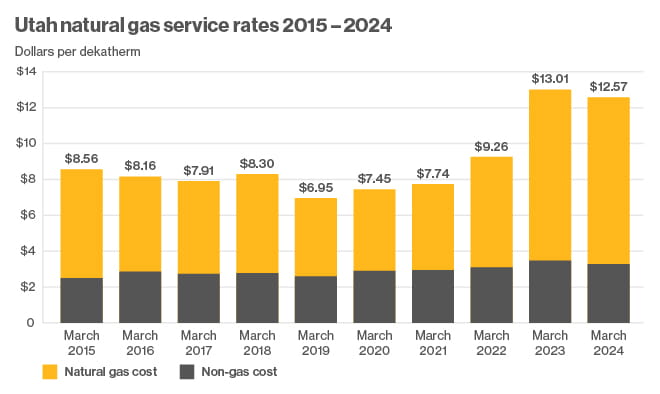View the guide to utility ratemaking to learn more about how Enbridge Gas works with state public service commissions to ensure consumers receive adequate and reliable utility services at reasonable rates.

Determining the cost for gas service
The amount of gas you use is charged by dekatherms (DTH), a unit of energy used to measure natural gas. The cost per DTH is determined by:
- Gas costs – the amount Enbridge Gas pays for the gas it resells to its customers with no mark-up.
- Non-gas costs – the costs of operating and maintaining the company’s distribution system.
These rates are approved by state public service commissions and change periodically. Typically, about 50% of a residential customer’s bill accounts for the cost of gas supplies we purchase on their behalf. To view current rates and adjustments, please see rates & tariffs.

Gas costs
Enbridge Gas purchases gas for its customers and passes those costs on to customers on a dollar-for-dollar basis. These costs are not marked up, meaning the company does not profit from gas supplies it provides to customers. For instance, if the company purchases natural gas for $8 per dekatherm, customers pay $8 for each dekatherm of gas used in homes or businesses. If the price of natural gas goes up or down, the rates customers pay will also change to reflect that change.
Gas-cost recovery adjustments are filed at least twice per year with public service commissions to bring the company back in balance. Customers have either underpaid or overpaid for the natural gas they used, depending on how market prices have fluctuated. Gas-cost recovery adjustments wouldn’t be necessary if the cost of gas stayed constant. Gas prices are affected by demand, major-weather events, international conflicts, supply-chain issues, out-of-service pipelines and other factors.








